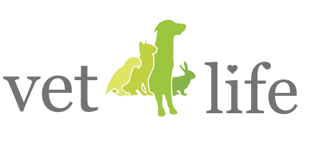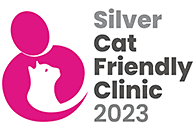When was the last time you looked at your pet’s teeth? Out of every 5 cats and dogs over the age of three, 4 of them will have some signs of dental disease. It is commonly overlooked by owners despite being one of the most common conditions we see here at Vet4Life.
Signs of dental disease
- Bad breath
- Red, inflamed or bleeding gums
- Yellow/ brown staining on the teeth
- Loose teeth
- Subtle change in eating behaviour; such as preferring softer foods
- Gradual change in behaviour; such as being less sociable, less lively or less playful
- Weight loss
- Drooling
- Reduced grooming
- Pawing at the face
Dog Breath… So what?
Dental disease is a real concern for our pets for a number of reasons. Firstly inflamed and infected gums and teeth are painful, many animals may only show very subtle signs of this pain and it can be easily missed. Only when treated may we see a real improvement. The infected gums will also put a strain on the other body systems including the liver, kidneys and lungs leading to general ill health.
Prevention
There are a number of things you can do at home to help limit the development of dental disease. The best is to brush your pet’s teeth each day. This is the same as you brushing your teeth and helps to remove the build up of food material and bacteria before it causes damage. Most animals tolerate brushing very well though it takes some time for them to get used to it.
There are a number of products you can add to your pet’s water to help prevent further build up of tartar on your animal’s teeth. The liquid contains enzymes, which helps to break down the bacteria, which are present on the surface of the teeth.
Eating dry food in preference to wet can help to reduce the speed at which tartar builds up. Wet food often sticks to the surface of the teeth more and does not have the same rubbing action as dry food. Chewing raw hides and specific dental chews can also help to breakdown tartar on the surface of the dog’s teeth. The mechanism requires the chew to rub on the surface of the teeth against the tartar so dogs that simply eat the chews will not have the full benefit.
Treatment
Dental problems can occur in even the best-maintained mouth so we have a number of treatments available at Vet4Life to help keep teeth and gums in the best of health. Here is a summary of the main procedures we undertake at the practice.
Scale and polish: This procedure involves cleaning all the tartar from your animal’s teeth and under the gum line. All the teeth are then polished which helps to remove small scratches on the tooth surface that bacteria love to hide in. We always preform a full visual inspection of the mouth and check that all the teeth are healthy.
Extractions: Sometimes the damage to the tooth is too great to save and it needs to be extracted. Animals cope very well with a reduced number of teeth and often eat better as damaged teeth can be very painful. We are fully equipped to remove any tooth in your animal’s mouth.
Deep extractions: some teeth are more difficult to remove than others as they have multiple roots. This is where our dental x-ray machine is invaluable as it allows us to directly visualise the root and fully extract it with the minimum trauma to the animal.
X-rays: With our dental x-ray machine we can look for damage to the teeth and bone below the gum line. This can include abscesses and damage to the jaw. Our specific dental x-ray machine allows us to image these areas at a lower level of radiation. This is therefore safer for your animal.
Dental care is a very important area of veterinary management. If you are worried about your pet’s teeth please bring your animal in for a check up. We are always happy to discuss any aspect of dental care with you and any other worries or concerns regarding your animal’s health.


